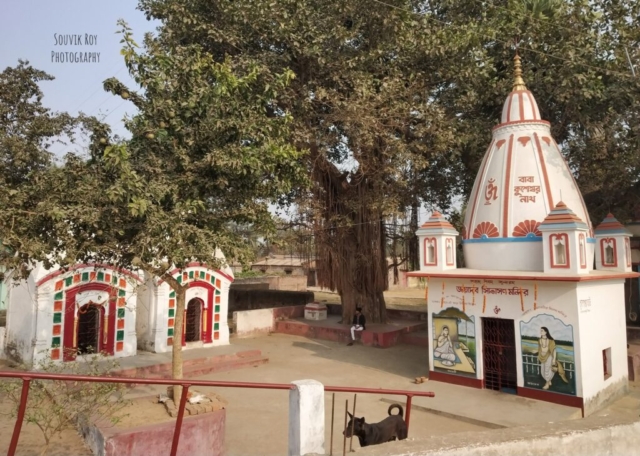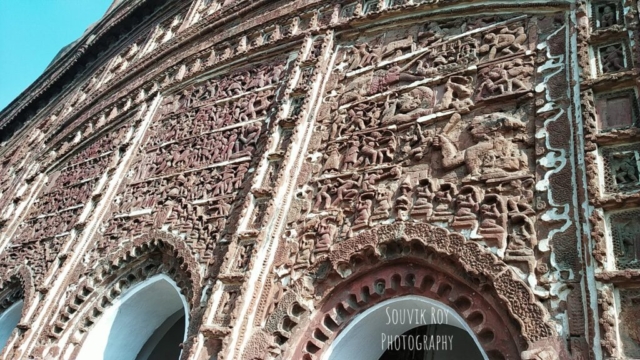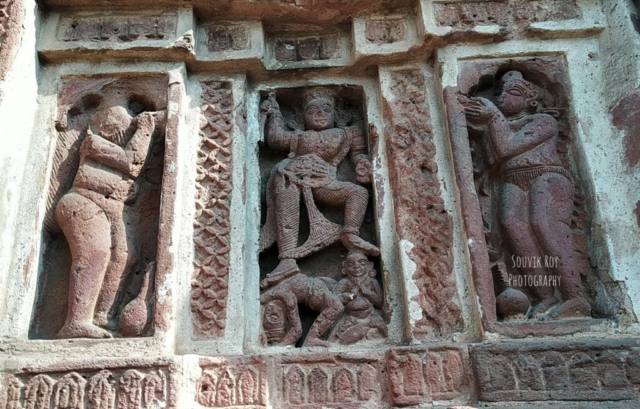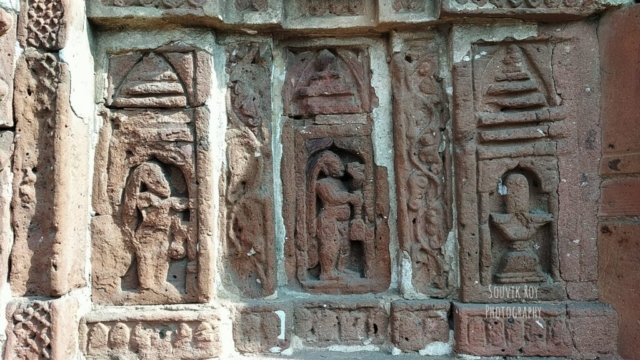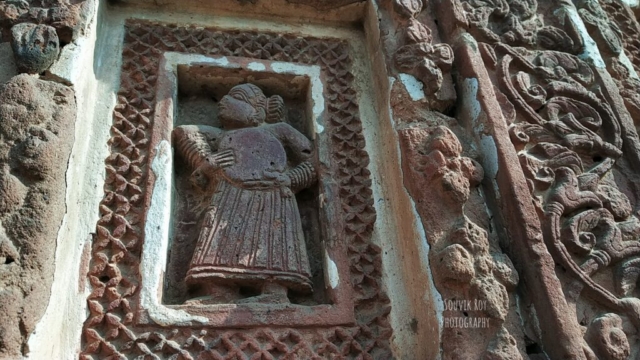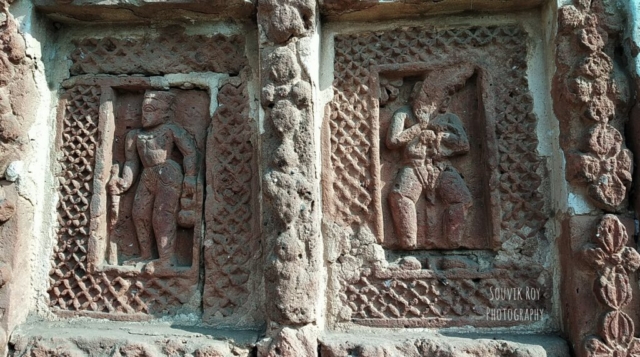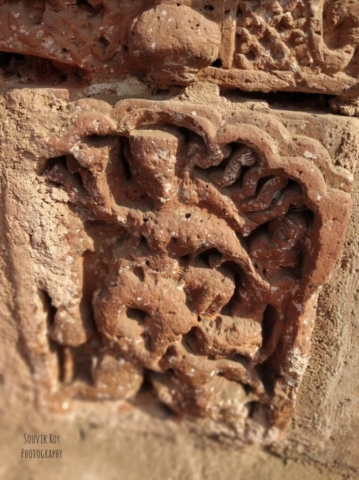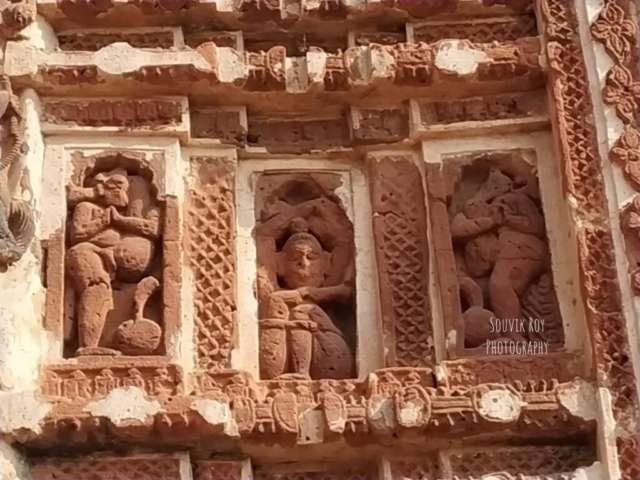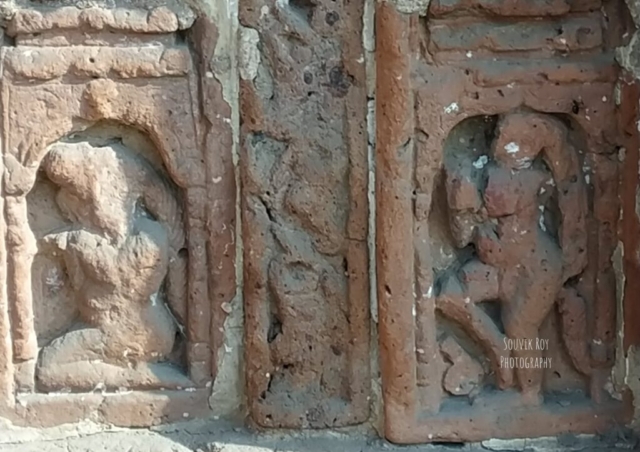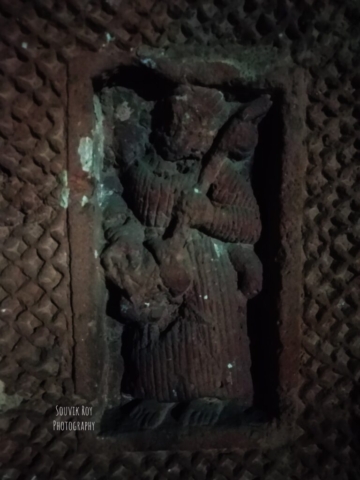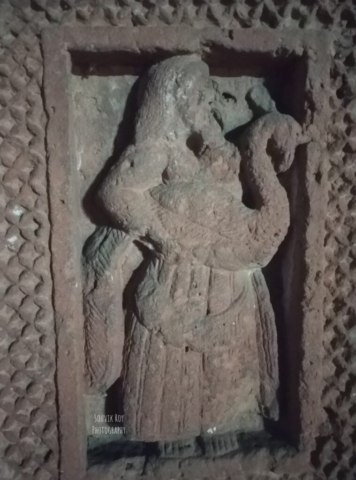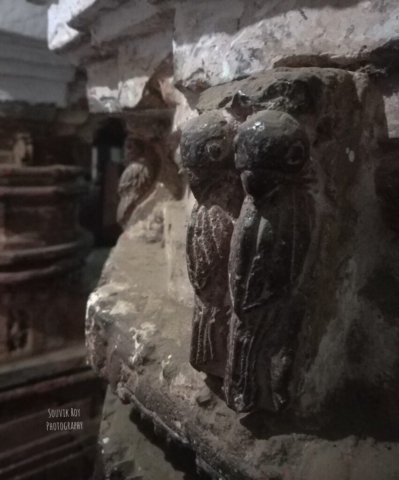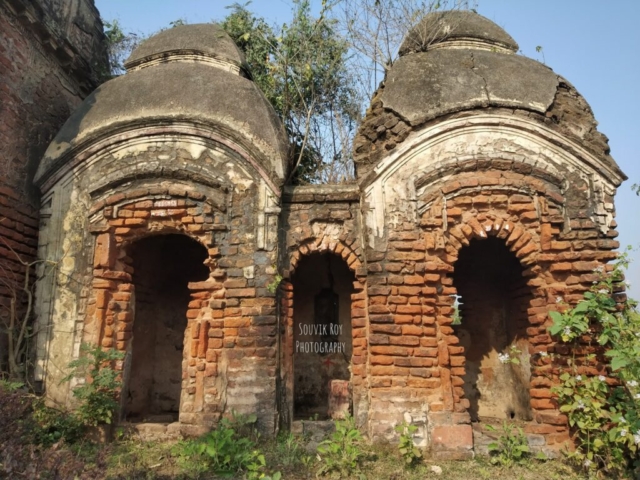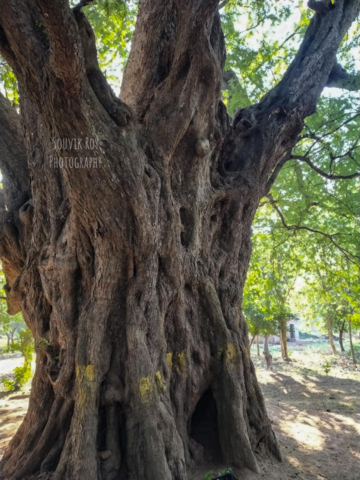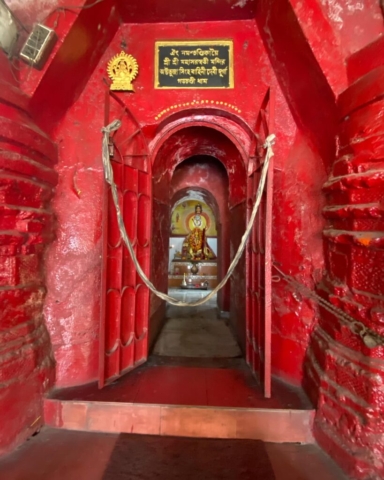Nestled in the tranquil landscape of Birbhum, the Joydev Kenduli Baul Mela popularly known as Joydeb Mela stands as a vibrant celebration of Bengal’s rich cultural and spiritual heritage. This annual festival, dedicated to the Baul tradition, attracts thousands of devotees and visitors from across the country. For us, the experience of attending this mela has been a cherished one, spanning over a decade of immersion in the soulful rhythms of Baul music, dance, and philosophy.

Since 2014, we’ve not only been attending the mela but have also established a unique cultural space—Golok Riverside Retreat—to host and welcome mela attendees, offering them a deeper connection to the traditions celebrated at Joydev Kenduli Baul Mela.
The Magic of Joydev Kenduli Baul Mela
The Joydev Kenduli Baul Mela is a spectacular gathering that takes place every year in Kenduli, a small village located near the Ajoy River in Birbhum. This mela, which takes place during the end of winter, is a grand tribute to Joydev, the 12th-century poet and saint, and it coincides with the Makar Sankranti festival. As a tradition that dates back to centuries, the mela showcases a melting pot of spirituality, folk music, dance, and poetry, with the Baul community at its heart. The Bauls are wandering mystics known for their profound musical and philosophical traditions that explore love, devotion, and the search for the divine.What makes the Joydev Kenduli experience unique is its deep connection to the river Ajoy and its spiritual significance. The Baul singers and other folk performers, dressed in vibrant costumes, sing songs that have been passed down through generations. These songs express profound emotions of longing for the divine, a theme that resonates deeply with the spirit of the festival.


Golok Riverside Retreat: A Cultural Sanctuary
At the Golok Riverside Retreat, we have created a space that not only serves as a sanctuary for the spirit but also as a vibrant cultural hub for the Joydev Kenduli Baul Mela attendees. Located on the banks of the Ajoy River, Golok provides an ideal setting for reflection and celebration, surrounded by nature’s beauty. Each year, we host a diverse group of visitors, artists, and spiritual seekers who come to experience the joy of Baul music, meet fellow enthusiasts, and immerse themselves in the mela’s unique offerings.
Golok Riverside Retreat is a place where people can reconnect with the essence of the Joydev Kenduli Baul Mela beyond the noise and bustle of the crowd. Whether it’s through a quiet moment by the river, a Baul music performance, or spiritual discussions around a fire, the retreat offers an intimate environment for guests to experience the mela’s soul-stirring impact.


The Akharas of Joydev Kenduli
The Joydev Kenduli Baul Mela is also known for its akharas, which are the gathering places of the Bauls and other folk artists. These akharas, spread across Kenduli, are spaces where artists, devotees, and spectators come together to engage in singing, dancing, and meditative practices. Among the many akharas, Golok has a special place, offering a blend of both spiritual and artistic immersion. The rituals, performances, and teachings at these akharas are what keep the spirit of the Joydev Kenduli Baul Mela alive year after year.
At Golok Riverside Retreat, we’ve strived to provide a platform for Baul artists and other folk performers to share their music and philosophy. Many renowned Bauls from different parts of Bengal have performed at our retreat, engaging the audience in the mysticism and philosophy of the Baul tradition. These performances are not just entertainment but a means to experience the depth of Bengali folk spirituality, which transcends language, culture, and religion.


TarkataZ: Preserving Bengal’s Folk Legacy
A major part of our efforts to document and preserve the Joydev Kenduli Baul Mela and other folk traditions has been through our YouTube channel, TarkataZ. The channel has been an essential platform for archiving and showcasing the cultural heritage of Bengal. With a focus on interviews and performances of some of the most renowned folk artists in the region, TarkataZ is a treasure trove of knowledge about the Baul community, their music, and their philosophies.
Our videos capture the heart of the Joydev Kenduli Baul Mela, from intimate conversations with Baul performers to breathtaking performances by renowned artists. These videos serve as a window into the soulful world of Bengal’s folk culture, offering a glimpse into the heart of the mela. Many of our videos feature Baul music and dance performances that resonate with the spiritual energy of the festival, allowing audiences to experience the magic of Joydev Kenduli from wherever they are. You can watch these inspiring performances on our TarkataZ YouTube channel and explore the artistry that makes the mela a truly transformative experience.
A Living Tradition
The Joydev Kenduli Baul Mela continues to grow in significance, attracting more people each year who seek to experience the vibrancy of Baul music and the spirituality embedded in the festival. However, it remains a space where tradition and innovation coexist. While the Bauls continue to perform their traditional songs, new generations of artists are also coming forward, adding their voices to the festival’s rich tapestry. This balance between the old and the new ensures that the Joydev Kenduli Baul Mela remains relevant and continues to inspire both young and old.
Our experience at Golok Riverside Retreat has been about more than just hosting visitors during the mela—it’s been about creating a space for conversation, learning, and celebrating the living traditions of Bengal’s folk culture. Through our efforts, we hope to contribute to preserving these traditions, ensuring they are passed down for future generations to experience and appreciate.
FAQs on the Joydev Kenduli Baul Mela
This section will highlight the FAQs on the Joydev Kenduli Baul Mela, a popular cultural and religious festival in West Bengal, India, known for celebrating the Baul traditions and music:
1. What is the Joydev Mela?
Answer:
. The mela, or fair, is dedicated to Jaydeb, a renowned poet-saint and the creator of the “Geet Govind,” and the Baul tradition of music. The event showcases performances by Baul singers, spiritual discourse, and traditional rituals, reflecting the spiritual and artistic heritage of West Bengal.
2. When is the Joydev Kenduli Baul Mela held?
Answer:
The Joydev Kenduli Baul Mela is typically held in the month of January, during the occasion of Makar Sankranti, a festival that marks the winter solstice and the start of the harvest season in India. The specific dates vary every year based on the lunar calendar.
3. What is the significance of Joydev Kenduli Baul Mela?
Answer:
The mela is significant as it honors the legacy of Jaydeb, a 12th-century poet-saint and a follower of the Bhakti movement, particularly associated with the Vaishnavism tradition. The festival is also a tribute to the Baul community, whose music and philosophy are deeply intertwined with Jaydeb’s teachings. The Baul music emphasizes devotion, mysticism, and the search for the divine within oneself, and the fair serves as an important platform for showcasing this unique folk tradition of West Bengal.
4. What is Baul music, and why is it important to the festival?
Answer:
Baul music is a unique form of folk music that originated in Bengal, blending elements of Hindu mysticism, Sufism, and the Bhakti movement. Baul singers, known as Bauls, use simple instruments like the ektara (a one-stringed instrument) and the dhol (drum) to create soulful melodies that express love for the divine and the search for inner truth.
At the Joydev Kenduli Baul Mela, Baul musicians from across Bengal and neighboring regions gather to perform, keeping the tradition alive and sharing its spiritual messages.
5. Who are the Bauls, and what role do they play in the Mela?
Answer:
Bauls are wandering minstrels and mystic musicians who follow a non-conventional spiritual path, combining elements of Hinduism, Buddhism, and Sufism in their beliefs. They are known for their devotional songs and simple lifestyle, which focuses on love for the divine and seeking spiritual enlightenment. At the Joydev Kenduli Baul Mela, Bauls perform traditional songs, often engaging with the crowd, and participate in discussions on philosophy, spirituality, and love.
6. What types of performances take place during the Mela?
Answer:
The Joydev Kenduli Baul Mela features a variety of performances centered around Baul music, including:
- Baul Songs (Baul Gaan): Performances by Baul singers showcasing their soulful music, with lyrics focused on spirituality and devotion.
- Kirtan and Bhajan: Group devotional singing where participants sing in praise of the divine.
- Folk Dance: Traditional dances performed by Baul communities and other local groups.
- Spiritual Discourses: Discussions and teachings on spiritual practices and philosophy related to Baul beliefs.
- Traditional Rituals: Observances of religious rituals dedicated to Lord Joydev and other deities.
7. How can I attend the Joydev Kenduli Baul Mela?
Answer:
The Joydev Kenduli Baul Mela is open to the public, and anyone can attend. The event is held in the small village of Kenduli, which is located around 26km from Durgapur in West Bardhhaman district and around 30 kilometers from Bolpur Shantiniketan in the Birbhum district. Visitors can travel to the mela by road from major cities like Kolkata or Suri. The nearest railway station is Durgapur/Bolpur Shantiniketan, and buses and private vehicles frequently operate to the event site during the festival.
8. Is the Joydev Kenduli Baul Mela a religious event?
Answer:
Yes, the Joydev Kenduli Baul Mela is both a religious and cultural event. It honors Jaydeb, the poet-saint, and his contributions to the Bhakti tradition, which focuses on devotion to the divine. The mela is also a celebration of the Baul way of life, which combines religious devotion with music, dance, and a deep connection to the spiritual world. Although it has religious roots, the festival is open to people from various backgrounds and is known for its inclusive and universal appeal.
9. What are some of the traditional rituals performed during the Mela?
Answer:
During the Joydev Kenduli Baul Mela, several traditional rituals take place, including:
- Joydev Puja: A special prayer and ritual performed in honor of Jaydeb, the poet-saint. Devotees gather to offer their respects and seek blessings.
- Prayers to the deities: Participants offer prayers to various Hindu deities, especially Lord Krishna, and perform rituals related to the Vaishnavism tradition.
- Processions: Pilgrims often take part in processions, singing hymns and chanting mantras along the way to mark the festive occasion.
- Rituals by Baul Singers: Baul singers and spiritual leaders often perform their unique prayers and songs, invoking the divine during their performances.
10. What is the best time to visit the Joydev Kenduli Baul Mela?
Answer:
The best time to visit the Joydev Kenduli Baul Mela is during the days leading up to and around Makar Sankranti (January 14-15), as the mela is most vibrant and active during this period. This is when the majority of performances, rituals, and festivities take place. The fair lasts for several days, and visitors can experience the rich cultural, spiritual, and musical traditions of the Bauls and the local community.
These FAQs should provide a comprehensive understanding of the Joydev Kenduli Baul Mela, its cultural importance, and how to experience it.
Conclusion
The Joydev Kenduli Baul Mela is more than just an event—it is a reflection of Bengal’s enduring spiritual and cultural legacy. Through the performances, the akharas, and the rich tapestry of music and philosophy, the mela offers an immersive experience that touches the heart and soul. As we continue to host and participate in this celebration of Bengal’s folk traditions, Golok Riverside Retreat remains a place where people can truly connect with the spirit of Joydev Kenduli.
We invite you to join us, explore the performances on TarkataZ, and experience the magic of the Joydev Kenduli Baul Mela as it continues to unfold with each passing year.












